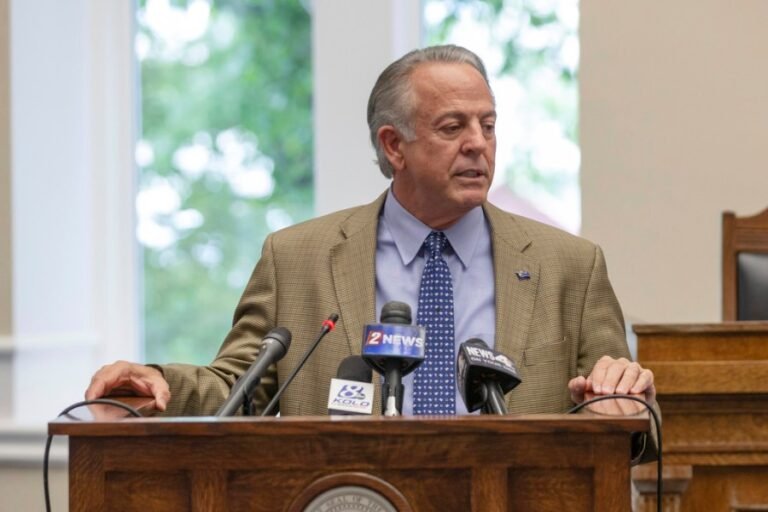
As political polarization intensifies, America’s colleges and universities face threats to free speech from both the left and right. Campus conservatives risk ostracization, shaming or social media mobbing for expressing unpopular views on hot-button identity and social justice issues. Complaints about progressive faculty periodically go viral, triggering torrents of online abuse. Students protesting Israel’s conduct in Gaza risk suspension, expulsion, arrest, doxxing and retraction of offers of employment.
While the left relies principally on social norms and peer pressure to silence disfavored speech, the right increasingly relies on state power.
In March, President Trump declared that “All Federal Funding will STOP for any College, School, or University that allows illegal protests.” International student “agitators,” he added, “will be imprisoned/or permanently sent back to the country from which they came.”
The State Department now uses artificial intelligence to scour the social media accounts of student visa applicants for signs of “a hostile attitude toward U.S. citizens or U.S. culture” or criticism of Israel.
In its “Compact for Academic Excellence in Higher Education,” the Trump administration conditioned priority for federal grants on institutions’ willingness to limit speech, use “lawful force” to prevent disruptive protests, and restructure or abolish departments hostile to conservative ideas.
Red states have issued gag orders restricting instruction about race, gender, sexual orientation and other “divisive issues.” Ohio, for example, limits discussion of “climate policies, electoral politics, foreign policy, diversity, equity, and inclusion programs, immigration policy, marriage, or abortion.”
Advocates claim such measures are necessary to counter a suffocating progressive orthodoxy on college campuses. In “Terms of Respect: How Colleges Get Free Speech Right,” Princeton University President and constitutional law scholar Christopher L. Eisgruber argues that free speech is actually “more robust on college campuses than in other sectors of our society.” When critics “bemoan the alleged lack of free speech on college campuses,” he contends, “their complaints often focus not on the absence of speech but rather on the presence of provocative or disrespectful speech with which they disagree.”
Individuals who stigmatize views they dislike, he points out, are acting in ways that “may be both fully consistent with free speech and morally justified,” because “a free and multicultural community will inevitably rely on public criticism to establish social norms that permit people to interact constructively across differences of viewpoint and identity.”
“Many free speech controversies,” he suggests, including those in which students “aggressively demand that they be protected from slights and offenses,” are therefore not about censorship. Rather, they are “about what it means for us to be civil to one another.”
In other words, they are about the terms of respect.
Narratives portraying students as “timid, self-infantilizing weaklings” unwilling to hear opposing views, moreover, “trade heavily on a few disgraceful occasions,” when “thousands of classes, speeches, and panels take place” on campuses every day “without incident.”
Although we recognize that everyone has a right to denounce or shun someone for deviating from progressive or, for that matter, conservative norms, doing so fosters cancel culture and self-censorship. The challenge is how to minimize this chilling effect without weakening free speech, which is indispensable to higher education and a pillar of democracy in America.
Eisgruber asserts, for example, that student efforts to disinvite controversial speakers should be seen as “evidence of independence, not censorship.” While demands to rescind an invitation are protected speech, however, they can encourage self-censorship and marginalize dissent.
Eisgruber notes that it is difficult “to draw a principled distinction between illegitimate cancel culture and legitimate counterspeech.” But to borrow Supreme Court Justice Potter Stewart’s observation about pornography, we often know it when we see it.
And we saw it at Yale in the 2015 campus-wide protest against Erika Christakis, a child psychologist and associate master of Silliman residential college. When administrators urged students not to wear feathered headdresses, turbans, “war paint” or blackface on Halloween, Christakis wrote, “Is there no room for a child or young person anymore… to be a little bit inappropriate or provocative, or, yes, offensive?” The firestorm did not abate until she resigned from the Yale faculty, and her husband stepped down as master of Silliman.
Eisgruber asserts that “aside from the demand to fire the Christakises, the dispute was at its core about civility norms, not censorship.” He suggests that “to make progress,” inflammatory terms like “cancel culture” be abandoned. We believe that no matter what the name, the impact is the same.
Given America’s ideological polarization, Eisgruber indicates, self-censorship “seems inevitable,” on and off campus, but it has an “especially corrosive” impact on higher education’s truth-seeking mission.
Eisgruber concludes with nine suggestions for strengthening campus discourse, including the adoption of clear principles to protect free speech, teaching students the value of civility, being visibly open to conservative viewpoints, and encouraging thoughtfulness about the use of online media.
These suggestions are good as far as they go, but it’s hard to come away with confidence that any consensus on the “terms of respect” will emerge on college campuses — or in American culture and politics — any time soon.
Glenn C. Altschuler is the Thomas and Dorothy Litwin Emeritus Professor of American Studies at Cornell University. David Wippman is emeritus president of Hamilton College.


